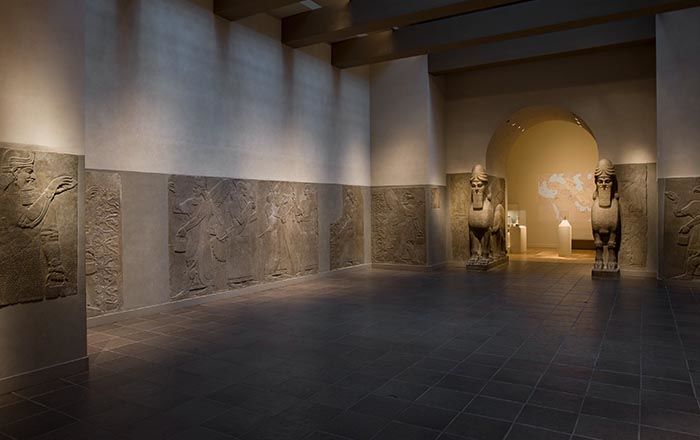Nineveh and Persia No. 1, plate XII from The Grammar of Ornament, 3rd edn.
Owen Jones British
Not on view
Owen Jones’ The Grammar of Ornament, first published in 1856, demonstrates his interest in identifying and codifying universal principles applicable to visual art and design, especially ones centered on architectural proportion, ornament, and color (for the complete first edition see Watson Library: NK1510 .J7 1856 Folio). Jones organized a global range of ornamental iconographies and colored patterns into a single framework, developing a series of Propositions, or rules, that he believed could be applied equally to the art of any period or culture, because they were rooted in laws that governed natural forms.
The folio publication from which this print comes influenced nineteenth century understanding of how important polychromy was in ancient art. The imagery countered an influential strand of aesthetic thought that especially favored pure white marble in Classical sculptures, an attitude that led to the removed of much surviving pigment and encouraged scholars and teachers to downplay the significance of color in ancient sculpture. More recently, this trend has been reversed, as contemporary cultural interests are supported by improved scientific techniques that allow microscopic traces of ancient pigment to be identified.
Following the excavation of Assyrian palaces in the mid-nineteenth century, ancient Mesopotamian imagery began to be used in European decorative arts, including jewelry and ceramics. Articles in periodicals and popular books described excavations at, and many sculptures removed from, sites in northern Iraq to England and France. Related public spectacles, such as the reconstructed ‘Nineveh Court’ in the Crystal Palace at Sydenham, London (one of several historic sculpture courts which Owen Jones helped design), fostered a fascination with Assyria and Assyrian art among the Victorian public. The designs in this print rely on details found in of Assyrian stone reliefs and glazed bricks found at Nimrod (ancient Kalhu), Khorsabad (ancient Dur-Sharrukin), and Nineveh. In some cases Jones added his own colors, at other times he based the patterns on surviving originals.
This image cannot be enlarged, viewed at full screen, or downloaded.

